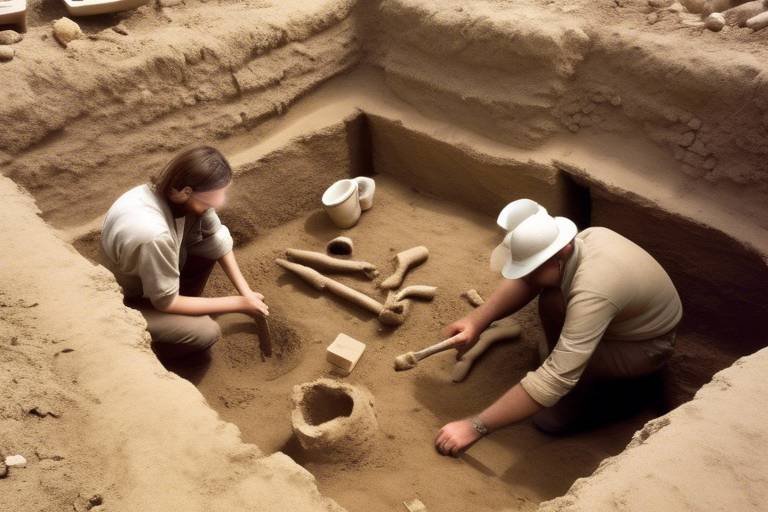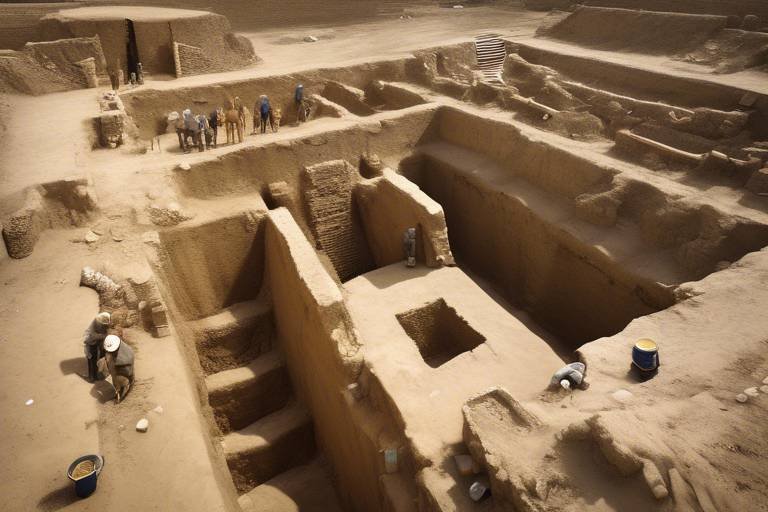The Lost City of Petra - Archaeological Insights
Hidden amidst the rugged desert terrain of Jordan lies the enigmatic Lost City of Petra, a UNESCO World Heritage site that stands as a testament to the ancient Nabatean civilization's ingenuity and artistry. Carved into rose-red cliffs, Petra beckons travelers and archaeologists alike to unravel its mysteries and marvel at its architectural wonders.
As you venture into the archaeological site of Petra, you are transported back in time to a bustling city that thrived as a crossroads of trade and culture. The intricate rock-cut facades and tombs whisper tales of a bygone era, where the Nabateans flourished through their mastery of engineering and commerce.
Among the architectural wonders of Petra, the Treasury stands as a symbol of grandeur, while the Monastery's imposing facade commands respect. The Royal Tombs, with their elaborate carvings and chambers, offer a glimpse into the ancient funerary practices of this remarkable civilization.
One cannot help but marvel at the water management system of Petra, a marvel of ancient engineering that sustained life in a harsh desert environment. The ingenious methods employed by the Nabateans to channel and store water showcase their resourcefulness and adaptability.
Trade and commerce thrived in Petra, as merchants from distant lands converged to exchange goods and ideas. The city's strategic location as a hub for trade routes connecting the Arabian Peninsula, Egypt, Syria, and the Mediterranean facilitated cultural exchanges and enriched the tapestry of Petra's society.
Beneath the rocky facade of Petra lie religious and cultural practices that offer insights into the spiritual beliefs and social customs of the Nabateans. Temples, altars, and burial sites reveal a society deeply rooted in its traditions and rituals, honoring both the living and the departed.
Recent excavations and discoveries at Petra continue to unveil new facets of this ancient city, shedding light on its past inhabitants and unraveling the layers of history buried within its sandstone walls. Each artifact and inscription adds to the rich tapestry of Petra's narrative.
However, the preservation challenges faced by Petra are immense, as natural erosion, climate change, and the impacts of tourism threaten to erode its fragile beauty. Conservation efforts strive to safeguard Petra's heritage for future generations, balancing the need for protection with the desire for exploration.
Amidst the ancient ruins, the modern world grapples with the delicate balance between tourism and sustainable development in Petra. Efforts to promote responsible tourism, engage local communities, and ensure economic benefits for the region aim to preserve Petra's legacy while fostering growth and prosperity.

History of Petra
The history of Petra dates back to ancient times, where it flourished as the capital of the Nabatean kingdom. Founded around the 6th century BC, Petra served as a crucial center for trade, connecting the Arabian Peninsula with Egypt, Syria, and the Mediterranean region. The strategic location of Petra allowed it to thrive as a significant trading hub, attracting merchants and travelers from far and wide.
Over the centuries, Petra witnessed the influence of various civilizations, including the Greeks, Romans, and Byzantines, each leaving their mark on the city's architecture and culture. The Nabateans, with their advanced knowledge of engineering and water management, sculpted impressive rock-cut structures that stand as a testament to their ingenuity and craftsmanship.
As a crossroads of cultures and commerce, Petra evolved into a cosmopolitan city, blending diverse influences into its unique identity. The city's prosperity and prominence continued to grow, solidifying its reputation as a center of wealth and power in the ancient world.
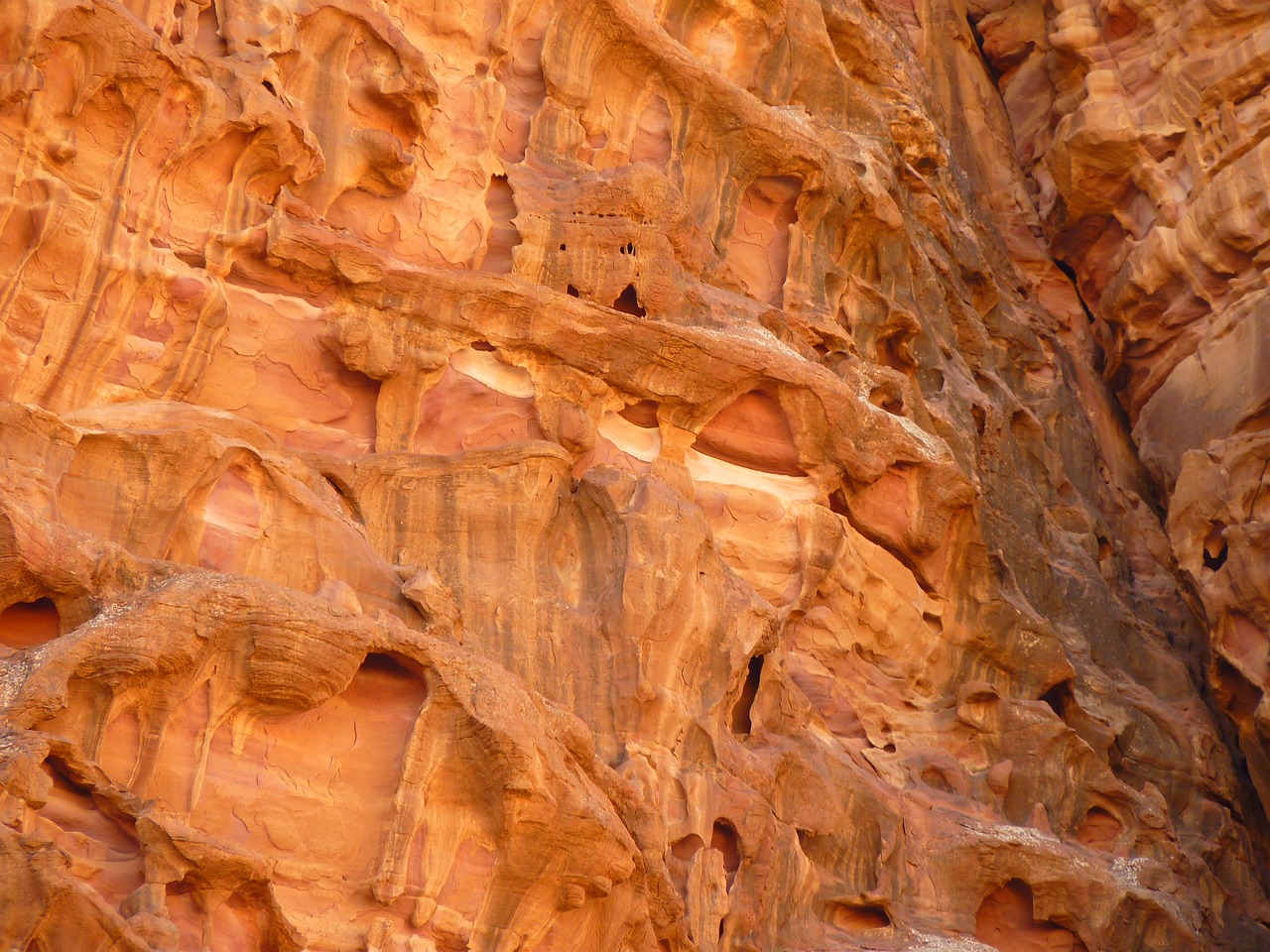
Architectural Wonders
The architectural wonders of Petra stand as a testament to the ingenuity and craftsmanship of the ancient Nabateans. Among the most iconic structures is the Treasury, carved into the rose-red cliffs, believed to be a royal tomb or a temple. Its intricate façade, adorned with columns and sculptures, mesmerizes visitors with its grandeur and mystery.
Another remarkable site is the Monastery, a massive structure perched high on a hilltop, featuring a monumental doorway leading to a vast interior chamber. The detailed carvings and expansive views from this vantage point evoke a sense of awe and wonder at the architectural prowess of the Nabateans.
The Royal Tombs, a series of elaborate burial chambers cut into the rock face, showcase the elaborate funerary practices of the Nabatean elite. Each tomb is adorned with intricate decorations and inscriptions, reflecting the wealth and status of those laid to rest within.
Exploring these architectural marvels not only offers a glimpse into the past but also sparks curiosity about the technological innovations and artistic skills that enabled the Nabateans to create such breathtaking structures in the heart of the desert.
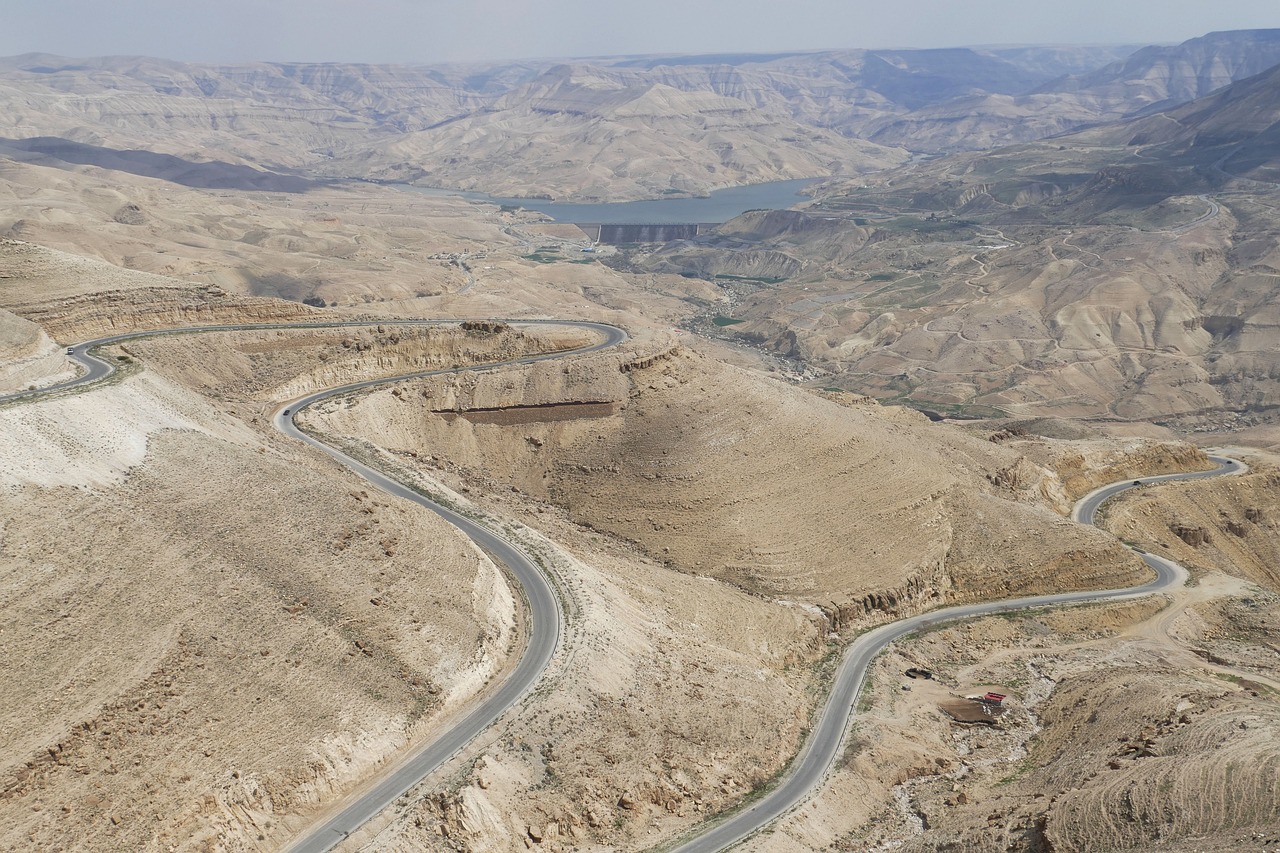
Water Management System
The water management system of Petra stands as a testament to the ingenuity and advanced engineering skills of the Nabateans. In the heart of the arid desert environment, where water is scarce and precious, the ancient city flourished due to its sophisticated hydraulic infrastructure. The Nabateans developed a network of channels, cisterns, and dams to efficiently collect, store, and distribute water throughout the city.
One of the remarkable features of Petra's water system is the ingenious method of utilizing natural rock formations to create aqueducts and pipelines that transported water from distant springs to the urban areas. The strategic placement of these conduits allowed for the efficient supply of water to the residents, agricultural fields, and public fountains even during periods of drought.
The system also included elaborate filtration mechanisms to ensure the purity of the water supply. By directing the flow of water through sedimentation tanks and filtration chambers, the Nabateans were able to maintain a clean and reliable water source for the city's inhabitants. This attention to detail in water quality reflects the advanced knowledge and care taken in managing this vital resource.
Moreover, the Nabateans constructed massive underground cisterns carved into the rock to store surplus water during the rainy season for use in times of scarcity. These reservoirs, some of which are still visible today, demonstrate the foresight and planning that went into sustaining the city's population and supporting its agricultural activities.
The water management system of Petra not only facilitated the daily life of its residents but also played a crucial role in the city's economic prosperity. The availability of water enabled agriculture to thrive in the region, supporting the cultivation of crops such as olives, grapes, and wheat. This agricultural surplus, made possible by the efficient water distribution system, allowed Petra to engage in trade and commerce with neighboring regions, further enriching its cultural and economic significance.
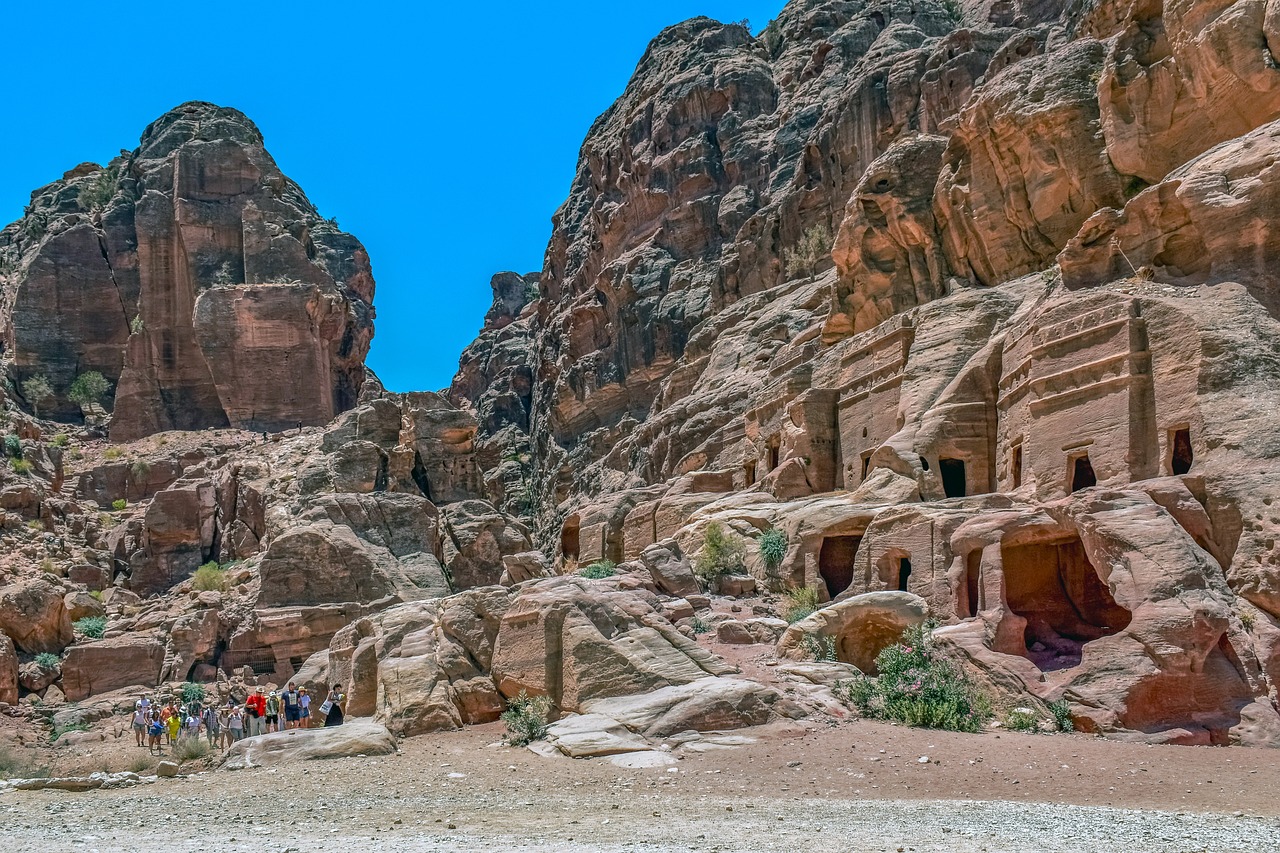
Trade and Commerce
Trade and commerce were the lifeblood of Petra, propelling the city to prominence as a bustling crossroads of ancient trade routes. Situated at the intersection of vital paths linking the Arabian Peninsula, Egypt, Syria, and the Mediterranean region, Petra thrived as a vibrant hub of commercial activity. Caravans laden with spices, silks, incense, and other exotic goods traversed the arid landscapes, bringing wealth and diversity to the city. The Nabateans skillfully capitalized on their strategic location, fostering a dynamic marketplace where goods from distant lands exchanged hands, fostering cultural exchange and economic prosperity.
The economic significance of Petra extended beyond mere trade; it encapsulated a melting pot of cultures, ideas, and goods. The city's merchants engaged in intricate negotiations, bartering, and transactions that transcended linguistic and cultural barriers. The bustling markets resonated with the vibrant energy of commerce, echoing the diverse languages and customs of traders from distant lands. Petra's commercial vibrancy not only fueled its economic growth but also enriched its cultural tapestry, leaving an indelible mark on the city's identity.
Moreover, Petra's role as a pivotal trading center facilitated the exchange of not only goods but also ideas and innovations. The convergence of different civilizations at Petra fostered a fertile ground for intellectual exchange, technological advancements, and artistic influences. The city became a crucible where knowledge, craftsmanship, and creativity intermingled, giving rise to a unique blend of cultural expressions. The legacy of Petra as a vibrant commercial hub transcends mere economic transactions; it symbolizes the interconnectedness of ancient societies and the enduring impact of trade on shaping human history.
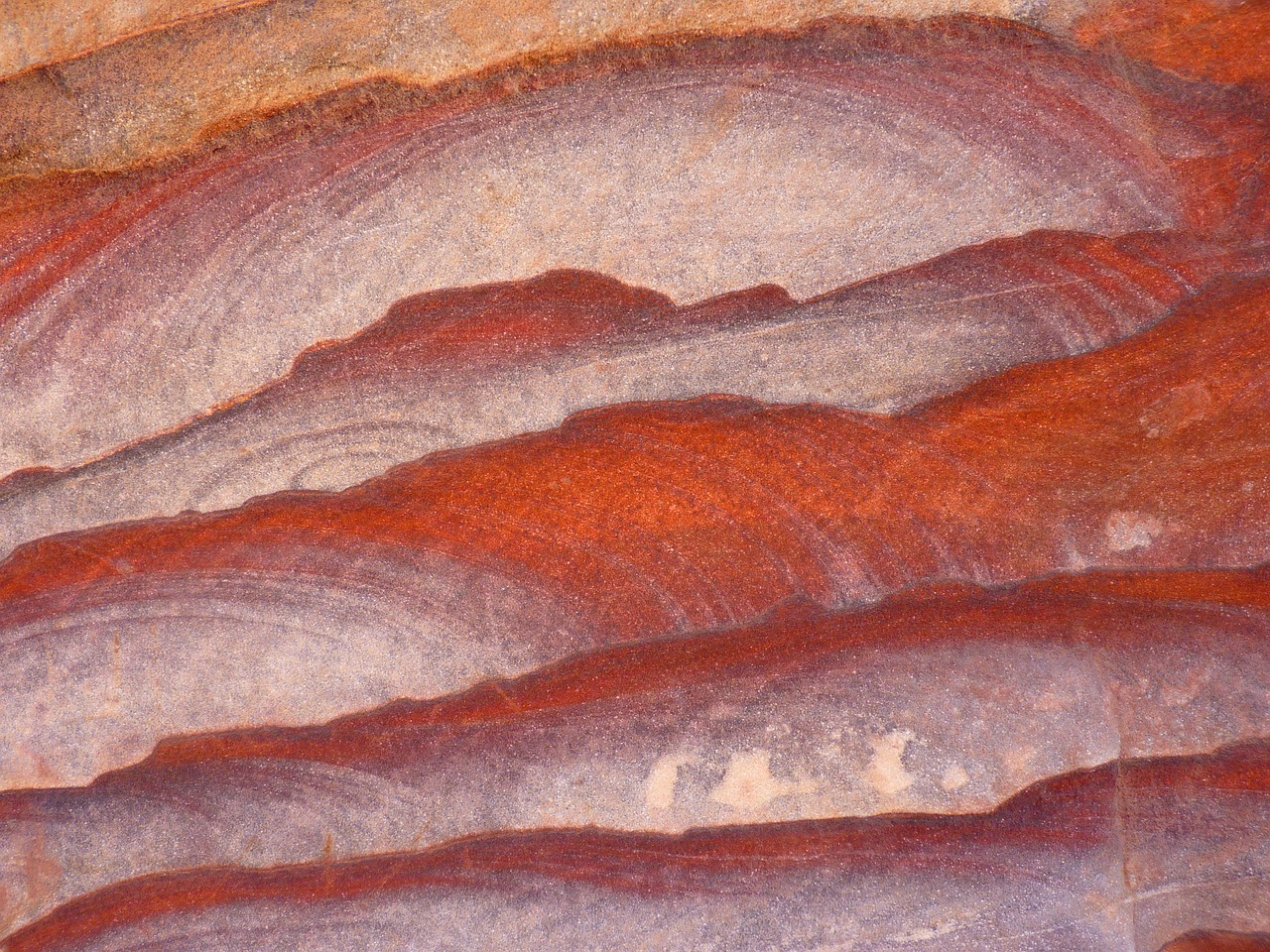
Religious and Cultural Practices
When delving into the religious and cultural practices of the Nabateans in Petra, one cannot help but marvel at the intricate details that provide insights into their spiritual life and societal customs. The city is adorned with temples dedicated to various deities, altars for rituals, and elaborate burial sites that reflect the religious beliefs and practices of this ancient civilization.
The Nabateans were known for their diverse religious influences, blending elements from indigenous traditions with Hellenistic, Egyptian, and Mesopotamian beliefs. This cultural fusion is evident in the architecture of the temples, where intricate carvings and inscriptions depict scenes from mythology and religious ceremonies.
One of the most striking features of Petra's religious landscape is the Great Temple, a monumental structure with a grand staircase leading to a massive courtyard. The temple complex includes altars for sacrifices and ritual ceremonies, offering a glimpse into the spiritual practices of the Nabateans.
Additionally, the Nabateans practiced elaborate burial rituals, with rock-cut tombs and mausoleums scattered throughout the city. These tombs, adorned with intricate facades and chambers, reflect the importance of honoring the deceased and the belief in an afterlife.
Exploring the religious and cultural practices of Petra not only provides a window into the spiritual world of the Nabateans but also highlights the rich tapestry of traditions that shaped the identity of this ancient city.
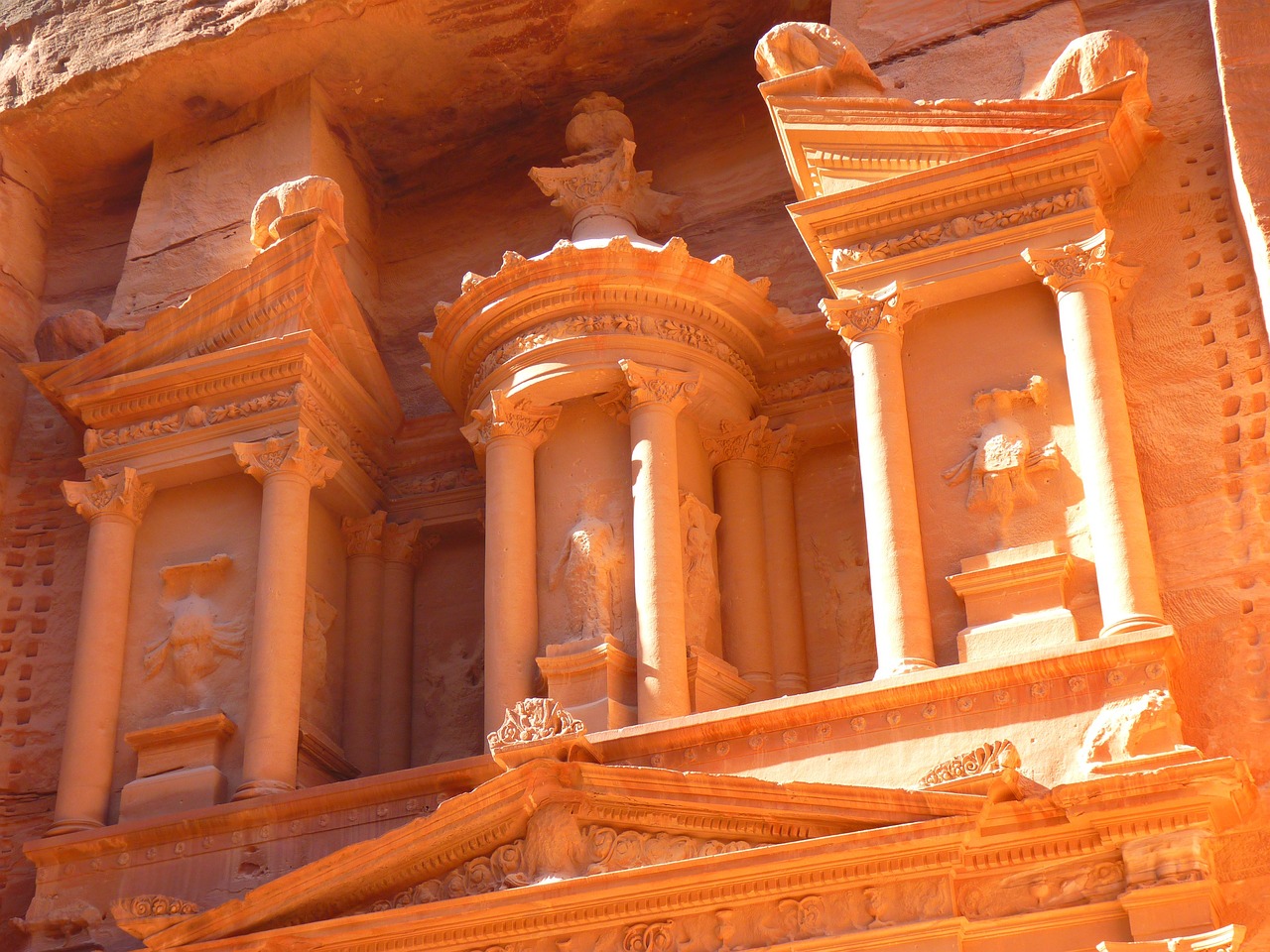
Excavations and Discoveries
Excavations and Discoveries at Petra have unveiled a treasure trove of historical artifacts and insights into the ancient city's past. Archaeologists have been diligently working to unearth new tombs, structures, and artifacts that shed light on the daily life and customs of the Nabatean people. Recent discoveries include intricate carvings, pottery, jewelry, and inscriptions that provide valuable clues about the city's inhabitants and their interactions with other civilizations.
One of the remarkable findings in Petra is the uncovering of elaborate tombs and burial sites, showcasing the Nabateans' beliefs and burial rituals. These discoveries not only offer a glimpse into the funerary practices of the ancient society but also reveal the artistic and architectural prowess of the Nabateans in constructing elaborate burial chambers.
Archaeologists have also unearthed remnants of ancient dwellings, religious structures, and water systems, offering a comprehensive view of daily life in Petra. The meticulous excavation work has brought to light the complexity of the city's layout and the technological advancements employed by its inhabitants to thrive in a challenging desert environment.
Exploring the inscriptions found within Petra provides valuable clues about the city's history, trade connections, and cultural exchanges with neighboring regions. These inscriptions, written in various languages, offer a glimpse into the multilingual and multicultural nature of Petra as a vibrant trading hub and melting pot of diverse influences.
The ongoing excavations at Petra continue to captivate archaeologists and historians alike, as each discovery adds another piece to the puzzle of this ancient city's rich history. The meticulous work of uncovering and preserving these archaeological wonders ensures that future generations can continue to marvel at the splendor and significance of Petra.
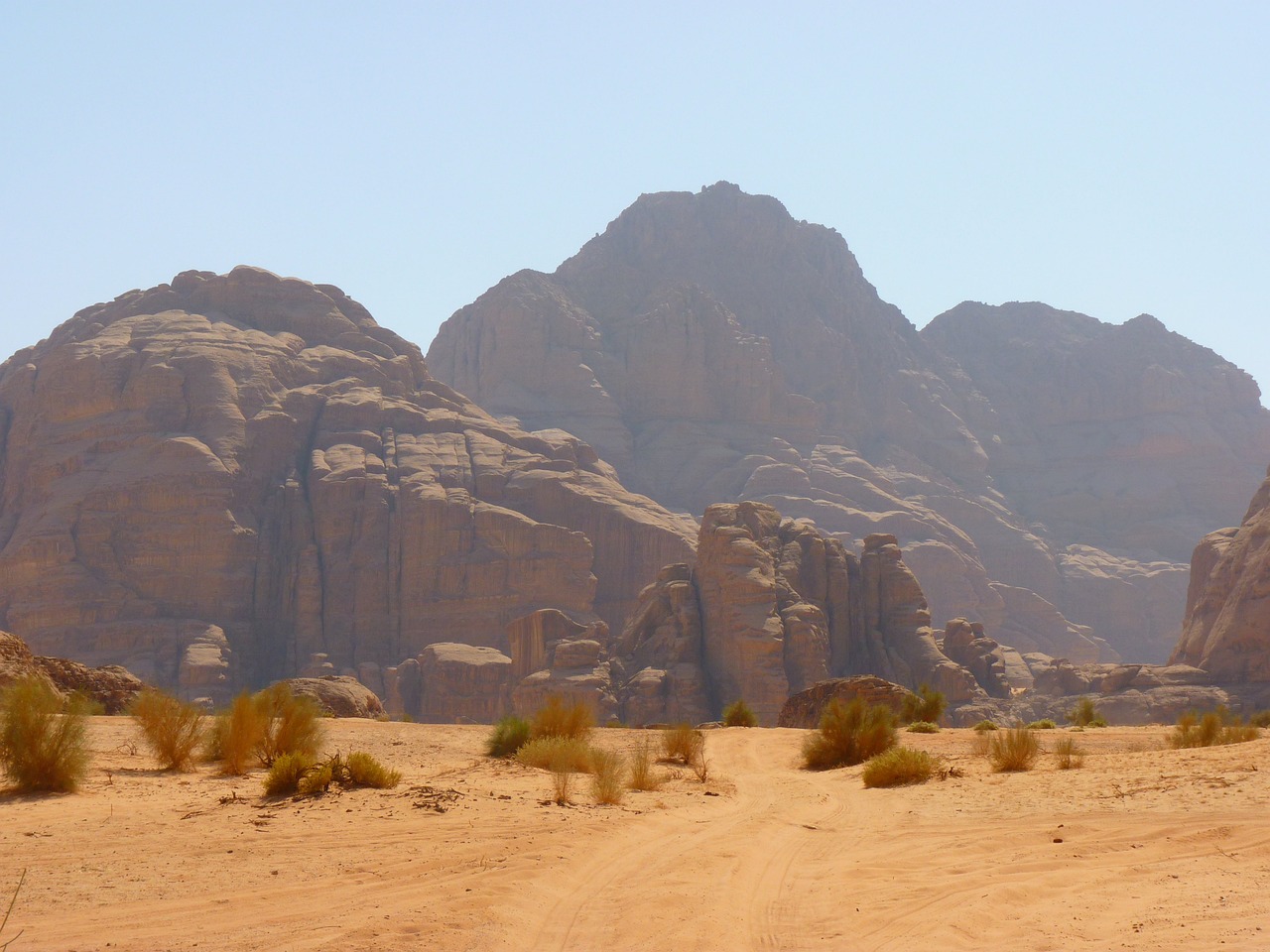
Preservation Challenges
Preserving the ancient city of Petra presents a myriad of challenges due to its delicate nature and exposure to environmental factors. One of the primary preservation challenges is the natural erosion of the rock-cut facades and structures caused by wind, rain, and fluctuating temperatures. The soft sandstone material of Petra is susceptible to weathering, necessitating ongoing maintenance and restoration efforts to prevent deterioration.
Furthermore, the impact of tourism on Petra poses a significant conservation challenge. The increasing number of visitors to the site can lead to wear and tear on the fragile rock surfaces, as well as littering and vandalism. Balancing the need to accommodate tourists while protecting the integrity of the archaeological site requires careful planning and management strategies.
Climate change also represents a pressing preservation challenge for Petra. Shifts in temperature and precipitation patterns can accelerate the deterioration of the rock-cut structures and impact the overall stability of the site. Implementing sustainable practices to mitigate the effects of climate change and protect Petra's heritage for future generations is crucial.
Another key challenge in preserving Petra lies in addressing the underground water seepage that threatens the stability of the rock-cut architecture. The intricate system of channels and cisterns designed by the Nabateans to manage water flow is now at risk of damage due to modern developments and environmental changes. Finding innovative solutions to prevent water-related damage is essential for the long-term conservation of Petra.
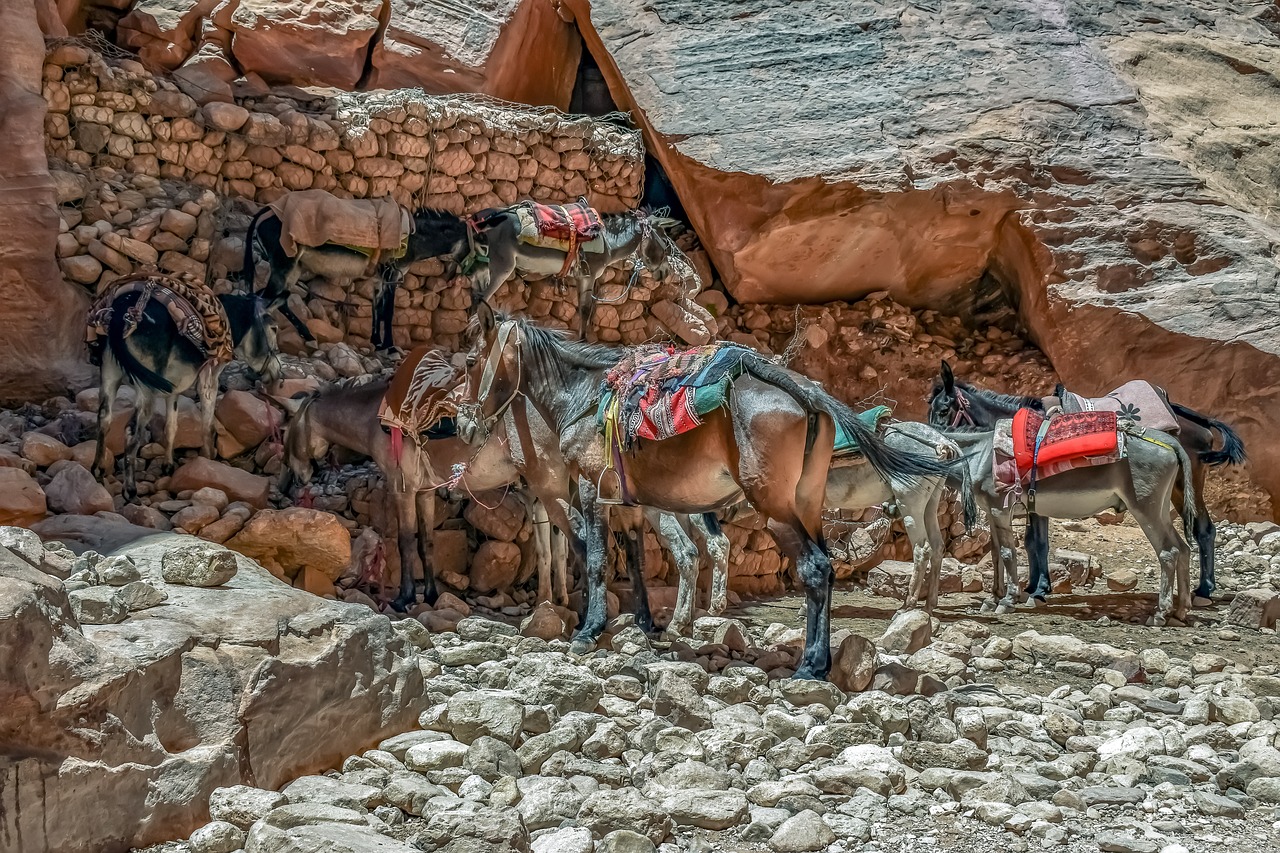
Tourism and Sustainable Development
Tourism plays a vital role in the sustainable development of Petra, balancing the preservation of its cultural heritage with economic growth and community engagement. The influx of tourists brings both opportunities and challenges to the region, requiring careful management to ensure the long-term sustainability of the site. By promoting responsible tourism practices, such as limiting visitor numbers, implementing conservation measures, and supporting local initiatives, Petra can continue to thrive as a world-renowned archaeological treasure while benefiting the surrounding communities.
Frequently Asked Questions
- What is the significance of the Lost City of Petra?
The Lost City of Petra holds immense historical and archaeological significance as a Nabatean capital and major trading hub. Its rock-cut architecture, water conduit system, and cultural heritage provide valuable insights into ancient civilizations.
- How were the rock-cut structures in Petra created?
The intricate rock-cut structures in Petra, such as the Treasury, Monastery, and Royal Tombs, were meticulously carved into the sandstone cliffs by the skilled Nabatean craftsmen, showcasing their advanced engineering and artistic abilities.
- What challenges does Petra face in terms of preservation?
Petra faces conservation challenges due to natural erosion, climate change, and the impact of tourism on its fragile structures. Efforts are ongoing to safeguard this archaeological marvel for future generations.
- How does tourism impact Petra and its sustainable development?
The balance between tourism promotion and sustainable development in Petra is crucial to preserve its heritage sites, engage the local community, and ensure economic benefits while protecting the city's cultural integrity.








